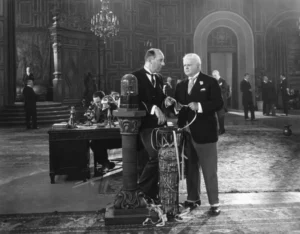
While the absence of women from the investing picture has been researched, written about and highlighted over recent years there is little sign that this gap is reducing. The number of women employed in the financial sector is low, the amount of money women have invested compared to men remains small and the lack of confidence women feel in investing still gets in the way. In this post, we’ll look at what this gap is, why it exists and how to make investing more accessible for everyone.
FEMALE INVESTING: THE CURRENT STATE OF THE GENDER GAP
The gender gap in investing is considerable. Women make up about a quarter of senior roles in the investment industry, received 1% of venture capital funding and a only a seventh of start up funding in 2021. But the gender gap is not just a matter of female representation. The amount of money women have invested in stocks and shares is paltry compared to their male counterparts. According to recent research from Boring Money:
- 3.3 million fewer women hold investments in the UK compared to men (the equivalent of three times the population of Birmingham).
- Men in the UK have £599 billion more than women in ISAs, investment accounts and private pensions. This is greater than the GDP (Gross Domestic Product) of Switzerland.
- The average private pension is £99k for women, £39k less than men (the average for men is £138k).
- Only 22% of women feel confident making investment decisions versus 41% of men.
WHY IS THERE SUCH A BIG GAP BETWEEN MALE AND FEMALE INVESTING?
And why is it so persistent? It comes down to three things: income, communication and culture.
1. Women have less money to invest
The Equal Pay Act was passed in the UK in 1971. Fifty years later the gender pay gap is still 15%. Women spend less time in paid work because they have children and have greater caring responsibilities. They thereby lose earning potential, often pay the bulk of (expensive) childcare costs and also live longer. All these factors mean women have less disposable income and less money to invest in their financial future.
On top of this women have the false perception that they need a lot of money to start of investing. The £20,000 limit on how much can be put into an ISA every year is perceived by as the minimum to invest. Actually the minimum needed to open an account and start investing is £25.
2. Women are excluded from the world of finance
The financial sector is still overwhelmingly male, pale and stale. Until 2019, of the 1496 listed investment funds in the UK there were more managed by men named Dave (108) than the total number of women who were fund managers!
The biggest barrier to women investing is that they (quite understandably) want to understand it all before they begin. But riddled with the most dreadful jargon the finance industry simply does not speak to anyone in simple straightforward English, take into account what motivates women or address the reality of their lives.
Financial products are designed for and aimed at male customers while the word ‘risk’ is bandied about all the time (how about using the word ‘uncertainty’) creating a fear for women about even starting.
3. Women are told they are not good with money
False stereotypes about gender are still influential in our society today. Women were traditionally considered as overly emotional, irrational and lacking the intelligence and logical faculties of men. Judged as less capable and able to properly manage their personal finances it was seen for her own good that a woman was not allowed to control her own financial situation. It was only in 1975 (not so long ago!) that a British woman could open a bank account and apply for credit and loans in her own name, without her husband’s permission.
These stereotypes prevail with a gender bias in the images of money and investing in the media. Men are advised on investment strategies with images showing wallets of cash. Women are targeted with pictures of saving pennies and piggy banks or told to stop splurging and buy fewer shoes.
WHY DOES ALL THIS MATTER?
Getting your money to work for you by investing is a powerful way to increase personal prosperity and provide greater independence and freedom. Through the investment choices we make we can align our money with our values to make a positive social and environmental impact as well as making financial returns. Women (and in particular younger women) are more likely to invest (or invest more) for social and climate impact if they could invest with a clear goal or purpose for good.
The fact that women are less likely to invest compounds their already existing financial disadvantages, choices, freedom and influence in the world. It gives them less of a voice. Bridging the investment gap is critical for women’s personal prosperity, financial equality, for society and our planet.
 BUT THE THING IS … WOMEN ARE BETTER INVESTORS!
BUT THE THING IS … WOMEN ARE BETTER INVESTORS!
Although fewer women invest when they do their returns are better. A study of more than eight million investment accounts by Fidelity revealed that women outperformed men by around 0.4% a year. Later research by Warwick Business School showed the gap to be even bigger, with women outperforming men by an average of 1.8% over a three-year period.
This is because women buy and hold their investments for the long term with their future goals in mind, invest in a wide variety of things and do not lose money by taking punts on things. Women prefer a slow and steady, boring is best investment style. And while the difference in performance does not seem that much as a percentage, if you factor in the magical force of compounding this this can make a huge difference in financial returns over time.
IT’S SIMPLER THAN YOU THINK (OR ARE TOLD) TO START INVESTING
So what can we do about all this? Apart from sorting out equal pay, creating an inclusive financial sector and overturning the system we are in….?!? Well, to get going with investing the best thing is to start investing NOW!
With your financial foundations in place (an emergency fund, a cash safety net and paying off consumer debt) you can start investing small and simply and get going with growing the financial future you want for yourself.
Investing is something that can be learned and the principles behind it are very simple. It is about making up your mind to invest in your financial education. Take a bit of time to learn the basics so you can understand and get your money working for you. Read a book, learn your Investing Basics on You Tube or attend an Investing Taster Class with me. Know also that you can invest for purpose and profit, your money can back things you care about and avoid things that you don’t want to have anything to do with.
If you’re unsure where to begin or want to learn more about how I can help you bridge the gap, get in touch. We can have a free, no-obligation chat to work out how you can start investing for your future.


